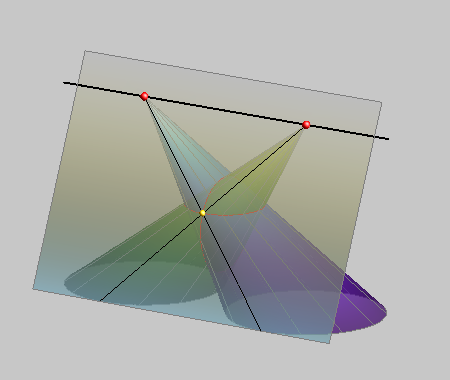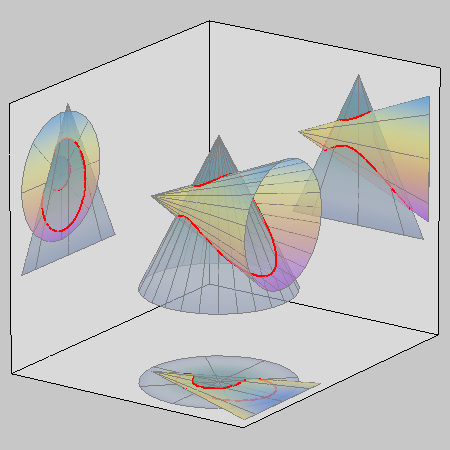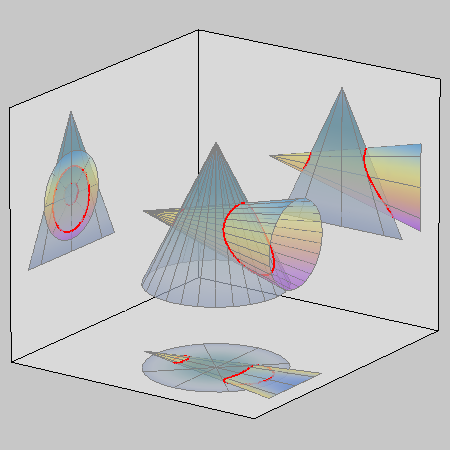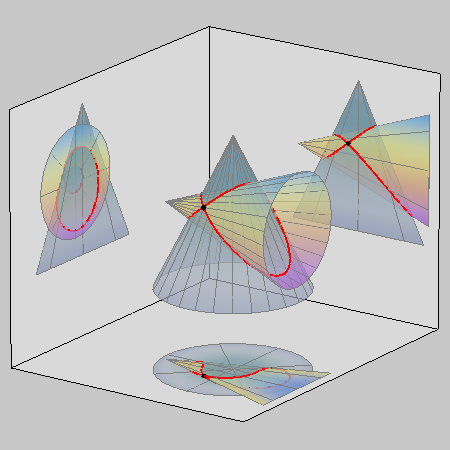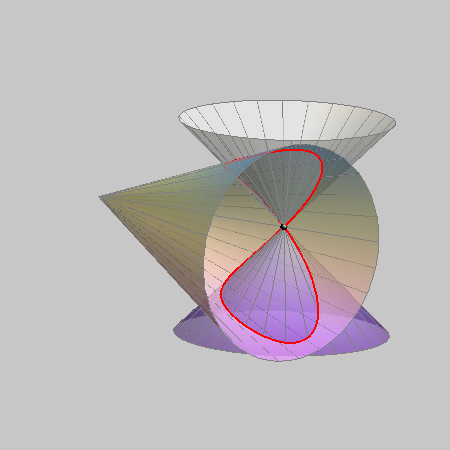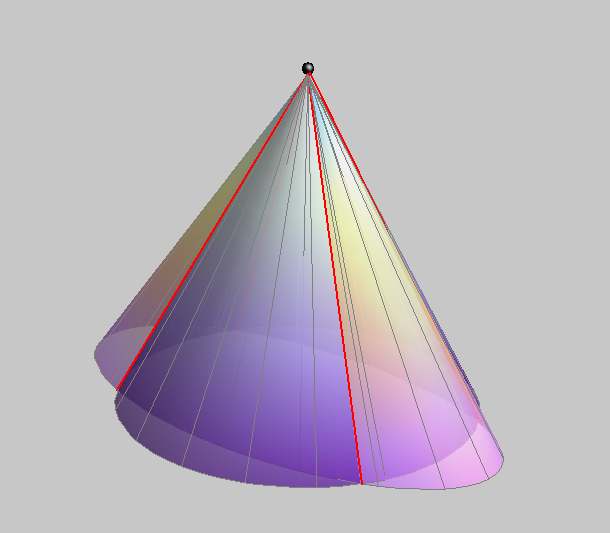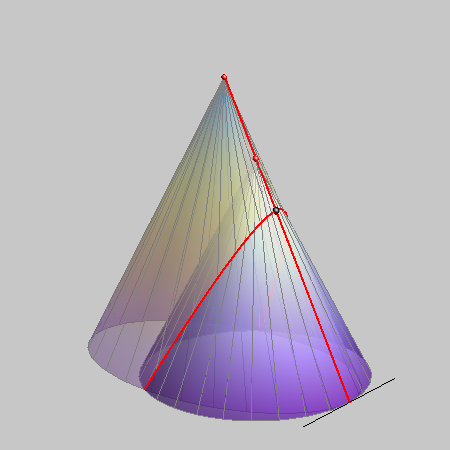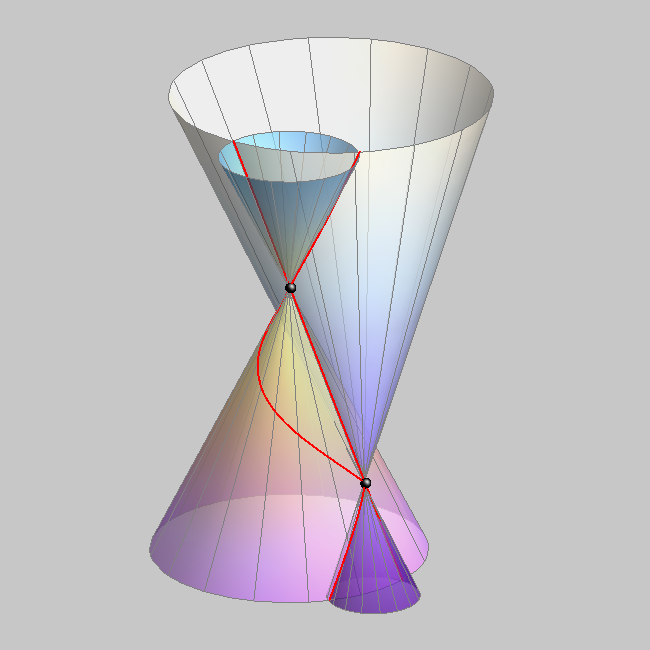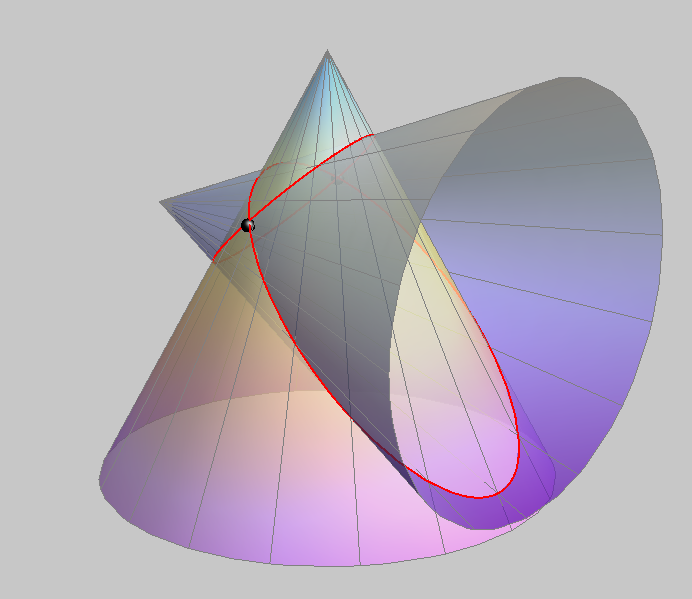The case of total degeneration into 4 lines appears when two cones have the same vertex.
In that case, the two cones have 4 common generatrices that pass through the common vertex and through the four intersections of the base curves of the cones.
These four intersections can be real and different, real and coincide or pairs of conjugate imaginary points and their type determines the type of generatrices.
Every two cones with a common vertex intersect at four lines that pass through the vertex.
|
|
The intersection curve of two cones can never degenerate into two different lines and a conic because in that case the intersection point of the two lines would be the vertex of
the cones. As we have seen, if the cones have a common vertex, their intersection curve degenerates into 4 lines.
However, if the two cones have a common generatrix and a common tangent plane along that generatrix, then this generatrix is a line counted twice that appears in the degeneration of the intersection curve, together with a conic.
When two cones have different vertices but one common generatrix with a common tangent plane along that generatrix, then the intersection curve degenerates into a double line and a conic.
|
